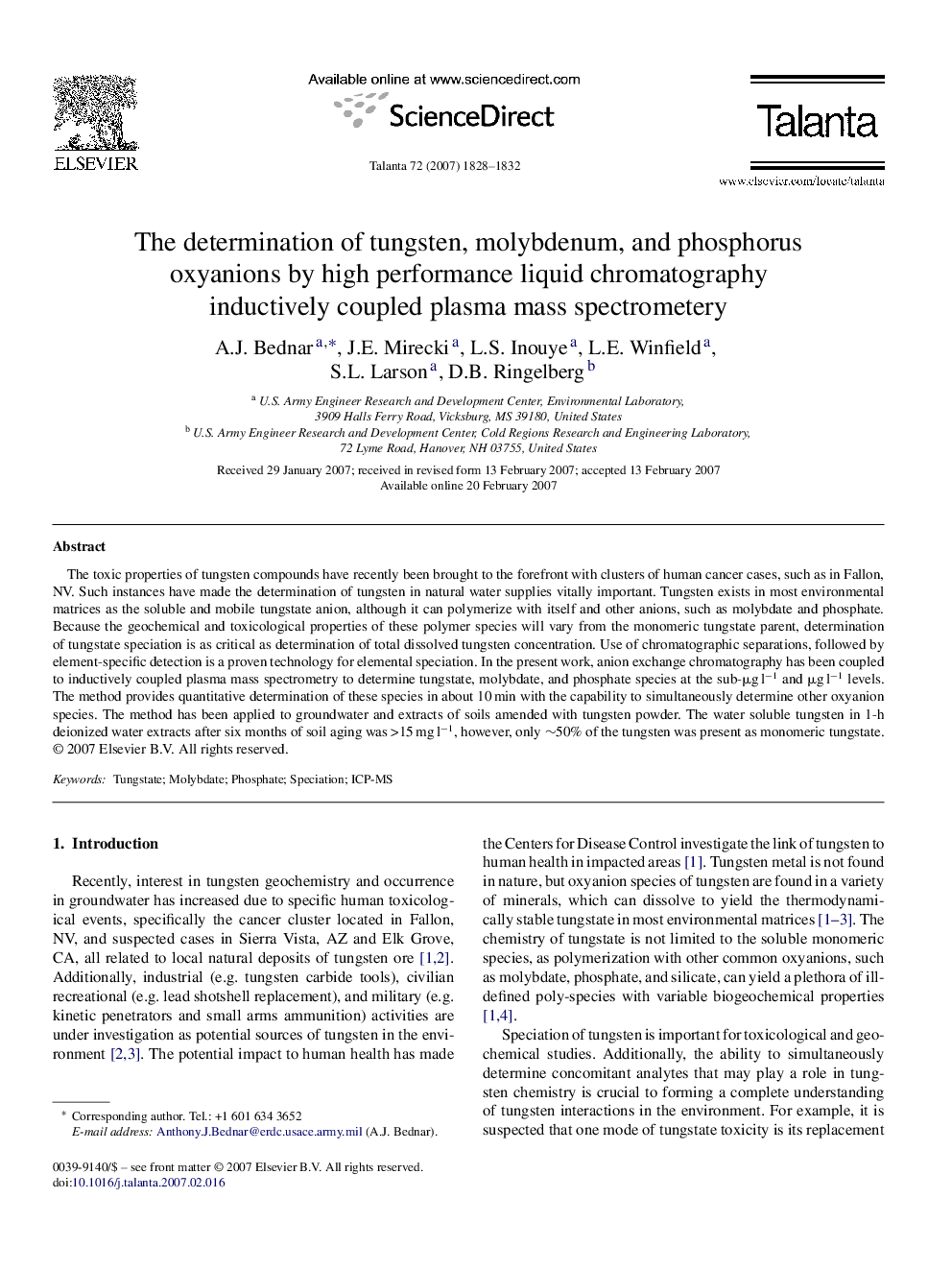| Article ID | Journal | Published Year | Pages | File Type |
|---|---|---|---|---|
| 1247269 | Talanta | 2007 | 5 Pages |
The toxic properties of tungsten compounds have recently been brought to the forefront with clusters of human cancer cases, such as in Fallon, NV. Such instances have made the determination of tungsten in natural water supplies vitally important. Tungsten exists in most environmental matrices as the soluble and mobile tungstate anion, although it can polymerize with itself and other anions, such as molybdate and phosphate. Because the geochemical and toxicological properties of these polymer species will vary from the monomeric tungstate parent, determination of tungstate speciation is as critical as determination of total dissolved tungsten concentration. Use of chromatographic separations, followed by element-specific detection is a proven technology for elemental speciation. In the present work, anion exchange chromatography has been coupled to inductively coupled plasma mass spectrometry to determine tungstate, molybdate, and phosphate species at the sub-μg l−1 and μg l−1 levels. The method provides quantitative determination of these species in about 10 min with the capability to simultaneously determine other oxyanion species. The method has been applied to groundwater and extracts of soils amended with tungsten powder. The water soluble tungsten in 1-h deionized water extracts after six months of soil aging was >15 mg l−1, however, only ∼50% of the tungsten was present as monomeric tungstate.
